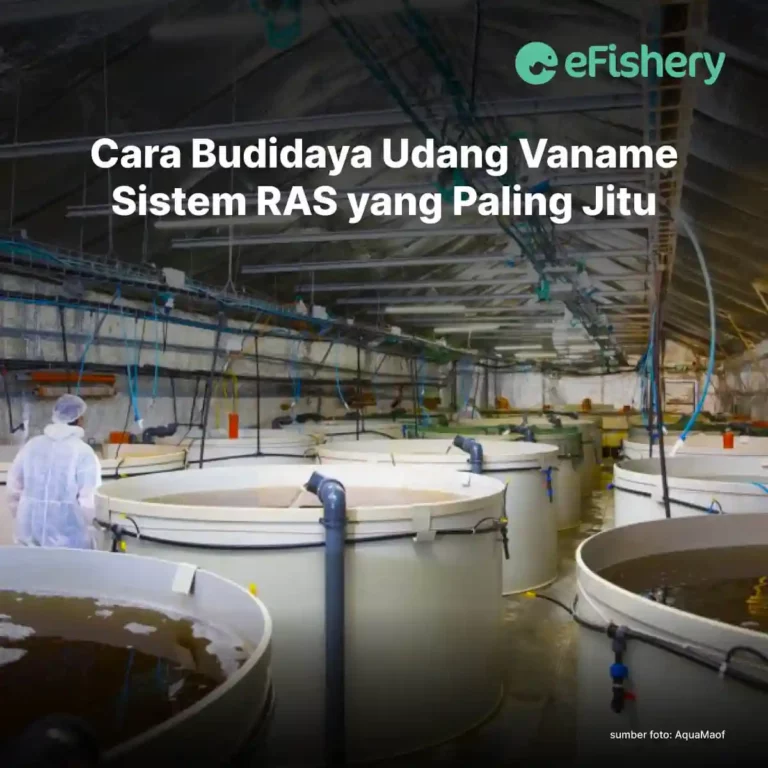Artikel Ini Telah Direview Oleh:
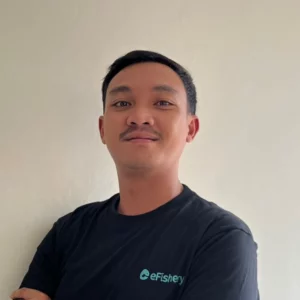
Laksono Radityo
Praktisi Budidaya Udang
Hello Mister / Ms Shooters! Do you want vannamei shrimp farming that saves water? If yes, vannamei shrimp farming with the RAS system (Recirculating Aquaculture System) worth a try. Find out how the race system vannamei shrimp cultivation can save water use and improve shrimp pond water circulation in this article, come on!
What is the RAS System of Vaname Shrimp Cultivation?
The RAS system of vannamei shrimp cultivation works by reprocessing the water used in the cultivation. This system also applies biofiltration to minimize the amount of ionized and non-ionized ammonia. RAS is a technology option that is widely used for intensive aquaculture activities. The use of the RAS system in vannamei shrimp farming is a solution in maximizing water utilization which will improve water quality during the cultivation process.
Shrimp farming with the RAS system or water circulation-based shrimp farming is a system that refers to filtration technology. RAS is a series of technologies applied in intensive aquaculture systems using infrastructure that allows continuous use of water (water recirculation). The basic principle of RAS is to use pond water repeatedly by controlling several water quality indicators to keep it in prime condition.
In its application, the RAS system is divided into 2 types, namely RAS with closed recirculation and RAS with semi-closed recirculation. On RAS with closed recirculation, water will be recycled 100% by the system. Whereas, RAS with semi-closed recirculation only recycles some of the waste water, so this system still requires the addition of external water.
Advantages of the RAS System
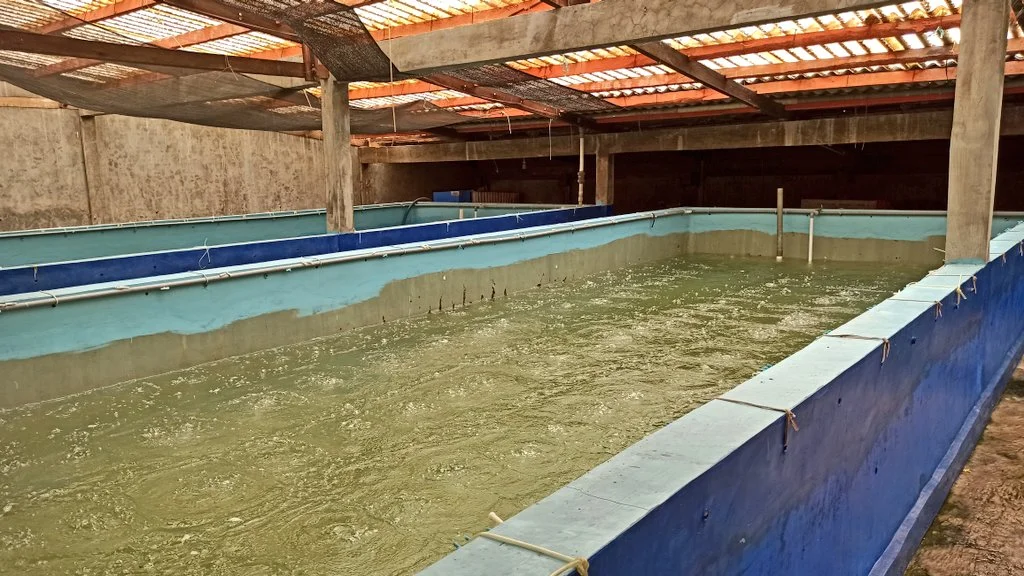
To get to know the RAS system in more detail, let's find out the 4 advantages of the RAS system that are profitable for vannamei shrimp farming!
- Minimize Excessive Utilization of Clean Water
RAS technology has the main goal of saving water. With this technology, no water will be wasted until the cultivation cycle ends. The water that first enters the pond will be purified and used continuously until harvest.
- Suitable for Cultivation in Limited Land
Cultivation with the RAS system is very appropriate for ponds that have small water sources and limited land. One example is ponds located in urban areas or other densely populated areas. This is inseparable from the advantages of the RAS system which only requires small ponds with a stocking density that exceeds ponds that do not use this system.
- Easy Harvesting
Compared to conventional systems, RAS technology also has advantages in harvesting shrimp. These advantages are inseparable from the small size of the pond, making it easier to reach during the harvesting process.
- Ease in Controlling Shrimp Diseases
Disease is a complicated problem in the cultivation cycle, usually there are many cases of more than one disease attacking the cultivation ecosystem. In the RAS system, it will be easier to detect the cause of shrimp disease because the environmental management process is easier.
Disadvantages of the RAS System
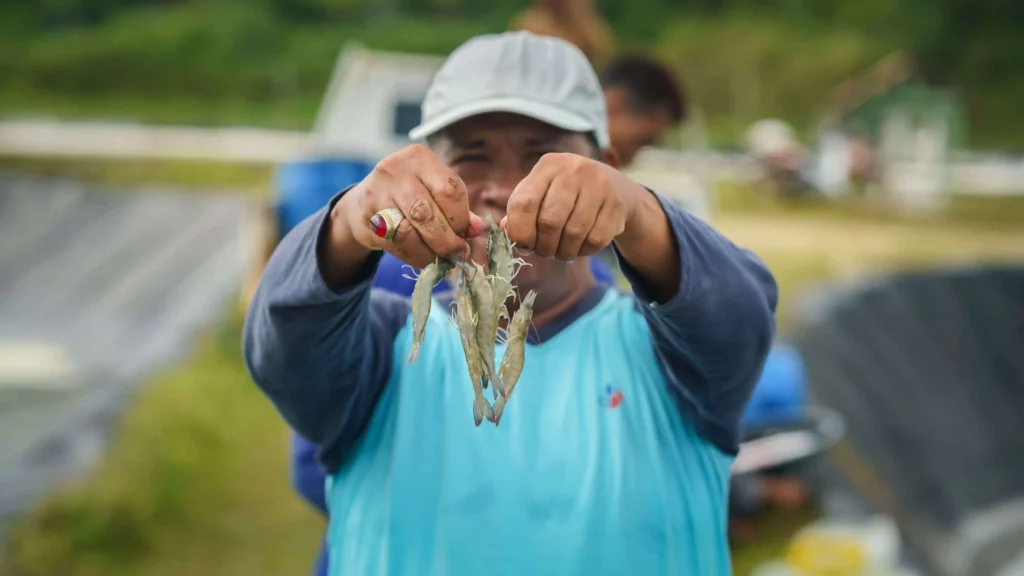
Despite its tempting advantages, the RAS system also has drawbacks that you should consider. The following are the disadvantages of the RAS system:
- Most Applied In Closed Spaces
Cultivation media using RAS technology are usually carried out in closed areas because this technology only requires small doses of sunlight. This small dose of sunlight is needed to kill germs, stimulate the growth of shrimp bones, and refresh the shrimp so that their appetite increases. So, it takes a window and a roof as a gap for sunlight to enter.
- The amount of costs that must be issued
To apply RAS technology in vannamei shrimp farming, there are several additional costs that must be incurred to buy water pumps, oxygen, pond construction, bioballs, zeolite, and charcoal. This cost is enough to drain the budget, especially if the stocking density of vannamei shrimp is high. The cost of electricity to turn on the pumps that produce oxygen will be more expensive because of this.
- Maintenance
Technically, maintenance of RAS is actually easy, it's just that it takes daily discipline in checking filters, settling dirt, water quality, etc. This is because pipe leaks, pump damage, etc. can occur at any time without warning. So, checking and maintenance is needed every day.
- Less Suitable for Areas with Frequent Power Outages
RAS technology is suitable for use in areas with electricity running 24 hours a day. Power outages will be very dangerous for the shrimp because a dead pump can starve the shrimp of oxygen.
Tools for RAS System Vaname Shrimp Cultivation
In its implementation, RAS technology applies the principles of physics, chemistry and biology. These three principles include filters, carbon media, ultraviolet (UV) light, And oxygen generators which serves to control and stabilize environmental conditions of shrimp. In addition to the four tools above, the following are other tools needed in the RAS system of vannamei shrimp cultivation:
- Concrete tub capacity of 30,000 L
- Water reservoir
- PVC pipe
- aerators
- Water pump
- Carpet
- Dead coral
- Wood charcoal
- Refractometer
- DO meters
- Thermometer
- pH paper
- Digital scales
- Test tube
- Petri dish
- Bunsen fire
- Blender
- Drop pipette
- 600 ml bottle
How to Cultivate Vaname Shrimp RAS System
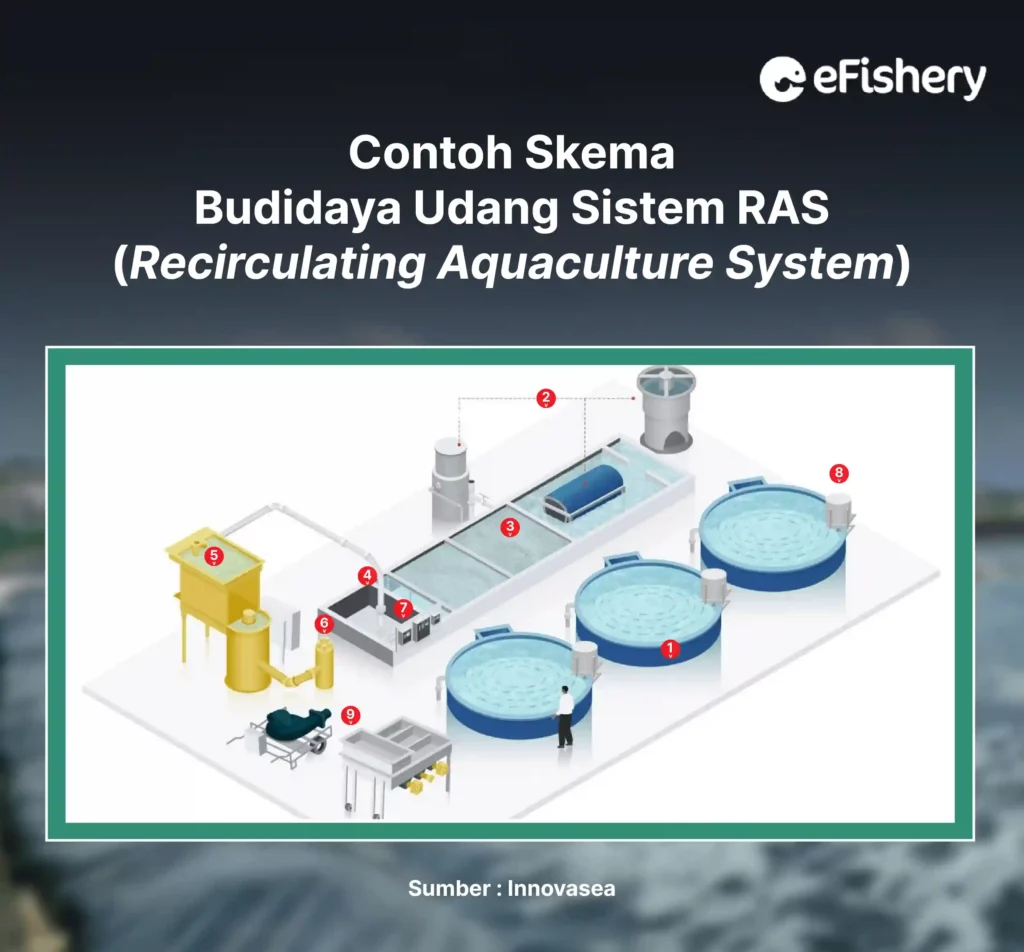
Information:
1. Tank: As a shrimp farming pond
2. Mechanical Filtration: To remove solid waste from the cultivation environment.
3. Biological Filtration: To convert ammonia from fish waste into harmless compounds.
4. Pump: As a diverter of water through the system efficiently.
5. Oxygenation and Degassing Place: To maintain optimal levels of oxygen, carbon dioxide, and nitrogen.
6. UV and Ozone Disinfector: To remove harmful pathogens such as viruses and bacteria from water.
7. Monitoring and Control: To monitor all aspects of operations, enable functions to be automated, and issue alerts in case of errors.
8.Auto Feeder: To simplify the feeding process by controlling the time and amount of feeding.
9. Handling of shrimp: To transfer shrimp from culture tanks for grading, counting and harvesting.
1. Persiapan Bak Pemeliharaan
Preparation of culture tanks using the RAS system begins with sterilizing the tanks through washing and chlorination processes. After being sterile, the tub is fitted with 5 filters consisting of:
- Filter 1 namely, carpet to filter material suspended in water.
- Filter 2, namely, a skimmer to capture material or micro-sized particles in water.
- Filter 3, namely, ginger coral which functions as a place for bacteria to live.
- Filter 4 namely, bioball which functions as a place for bacteria to live.
- Filter 5 namely, wood charcoal which functions to absorb waste compounds in the water.
2. Feeding
Feeding is carried out 4-6 times a day with a feeding schedule at 07:00, 10:00, 13:00, 16:00, 19:00 and 22:00. The percentage of feeding is 10% of shrimp biomass with an estimated SR (Survival Rate) 80%.
3. Pengecekan Kualitas Air
Checking water quality is carried out by taking samples of ammonium, nitrite, and TSS in the rearing tanks. Sampling for checking water is usually done 1 week before stocking fry and 1 week after stocking fry, repeated until harvest. After the sample is taken, you can take it to the BPIUUK test laboratory (Balai for Superior Shrimp and Shellfish Production) to be tested using the colorimetric method. In addition, daily sampling such as DO, pH, temperature, salinity which is carried out directly at the maintenance site is also required. Sampling of pH, water brightness, and salinity was carried out 2 times a day in the morning and evening. Meanwhile, DO sampling is usually done 1-2 times a day in the early and late afternoon.
For weekly water quality checks, it is usually done 1 week before stocking, and 1 week after stocking, repeated until harvest (not just 10 times). Because it adjusts from the target of cultivation and the length of shrimp cultivation itself
4. Pengecekan Total Bakteri dan Vibrio
Water sampling for total bacteria and total vibrio was carried out by taking water samples on the surface of the rearing tanks using bottles. After that, take the bottle containing the sample to the BPIUUK testing laboratory. Sampling of water for microbial abundance is carried out once a week and is usually equated with weekly water quality checks.
Get Cultivation Advice Directly from a Shrimp Expert in the Cultivation Consult Feature!
Need Help Regarding Shrimp Cultivation Business?
Fill in your personal data in the following form. Our team will immediately contact you via the number cellphone attached. Make sure the data entered is correct.
The cultivation of vannamei shrimp in the RAS system is indeed slightly different from the cultivation of vannamei shrimp in general because there are several things that must be added. If you are still confused about how to cultivate vannamei shrimp with this system, you can consult with a shrimp cultivation expert first. eFishery through features Cultivation Consultation in app eFarm. Besides being able to consult directly with shrimp farming experts, in the application eFarm You can also find other information about shrimp farming.
Come on, consult your shrimp cultivation at Cultivation Consultation eFarm!

Laksono Radityo - Praktisi Budidaya Udang
Berpengalaman sebagai asisten riset perikanan dan teknisi tambak udang. Saat ini aktif sebagai Technical Support Online di eFishery
- https://ojs.unud.ac.id/index.php/blje/article/download/80614/45506
- https://www.deheus.id/cari/berita-dan-artikel/recirculating-aquaculture-systems-ras-seberapa-pentingkah-untuk-meningkatkan-jumlah-produksi
- https://www.indotelko.com/read/1644029050/ras-teknologi-pertambakan-udang-dari-startup-fistx
- https://www.mdpi.com/2076-3417/11/20/9478
